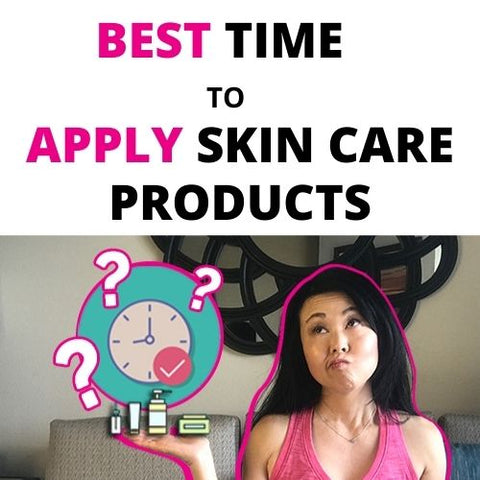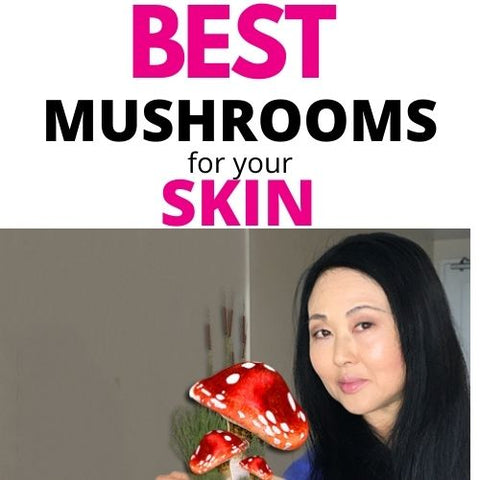Probiotics in skin care. More and more skin care companies
are coming out with different products that have probiotics to help treat Acne, Rosacea, and Sensitive skin.
The first US brand to add live cultures to restore the skin’s bacterial balance was Mother Dirt.
Probiotics are live bacterial cultures that when applied on the skin, can change the composition of the skins micro flora. Through the fermentation process, the probiotic bacteria produces acidic compound such as lactic acid. This brings down the pH of the skin. Making the pH of the skin more acidic.
This inhibits the growth of most pathogens and increasing the growth of “beneficial bacteria” on the skin.
Beneficial ingredients in probiotic includes:
-Hyaluronic Acid- Increases hydration and improves barrier function
-Acetic Acid-Antimicrobial
-Peptidoglycan/Lipotochoic Acid- Generates the production of AMPs ( Antimicrobial Peptides)
-Lactic Acid-Antimicrobial and help with the natural moisturizing factor
Diacetyl-antibacterial against pathogen such as Pseudomonas/E coli.
How Probiotics work on the skin
-Also, Melassezia yeast and variety of bacteriophage species also are part of the flora that live on our skin.
When the skin becomes compromised this can happen through:
-using too many acids
-using too many different products with different pH
-Antibiotics
-Over using Acne products
-Over washing
-etc
Why Probiotics are Important for the Skin
The bacteria that lives on the skin can now become pathogens , such as Acne or Folliculitis.
The bacteria on the skin can control the growth of potentially pathogenic organisms by regulating the immune response, the skins barrier function and is necessary for skin health.
The skins microbiome is influenced by pH.
Everyone’s pH is slightly different. Although the skins pH hovers around 5.5, everyone responds to different skin care products differently. What skin care products work effectively for an individual may not work for another.
The skin is also influenced by sebum production, barrier function and hydration.
Moist areas such as the armpit or behind the knees will have a higher amount of the Staphloccoci or the Coryne bacterium species. While the Proprioni bacterium are found more where the sebaceous glands are such as the face, back, scalp, and chest.
Dry areas of the skin have the greatest variety of species and the lowest number of bacteria.
Other factors that can influence the skins microbiomes are where you live and work , and the use of antibiotics and cosmetics.
Studies also have shown that the altering the skins microbiome can play a major role in the skin conditions such as dermatitis, acne, Psoriasis and skin cancer.
In summary, based on several articles, topical PREbiotics and PRObiotics have demonstrated skin improvements with acne and other skin conditions by altering the skins microflora.
However, at this time, more studies need to be made to justify all the hype.
One of the products reviewed that had Probiotics in their product was the NEW Image Purifying Probiotic Mask
“This is a yogurt-based probiotic blend that supports the naturally occurring flora to bring the skin back into balance.”
TEXTURE: Thick, clay based mask
COLOR: Dark green-Mineral rich Brazilian green clay blended with activated charcoal that draws out impurities from the skin.
Antioxidant Blend of Superfruit complex of:
-Goji Berries
-Pomegranate
-Mangosteen
-Acai
Willow herb -Helps reduce redness and dryness
Sources :
Kang BS, Seo JG, Lee GS, et al. Antimicrobial activity of enterocins from Enterococcus faecalis SL-5 against Proprionibacterium acnes, the causative agent in acne vulgris, and its therapeutic effect. J Microbiol 2009;47(1):101-109.
Sharma D, Kober M, Bowe W. Anti-aging effects of probiotics. Journ Drugs Dermatol 2016;15(1):9-12.
Zeeuwen PL, Kleerebezem M, Timmerman HM, Schalkwijk J. Microbiome and skin diseases. Curr Opin allergy Clin Immuol 2013;13:514-420.
Cinque B, La Torre C, Melchiorre E, et al. Use of probiotics for dermal applications. https://www.researchgate.net/publication/225238336_Use_of_Probiotics_for…




